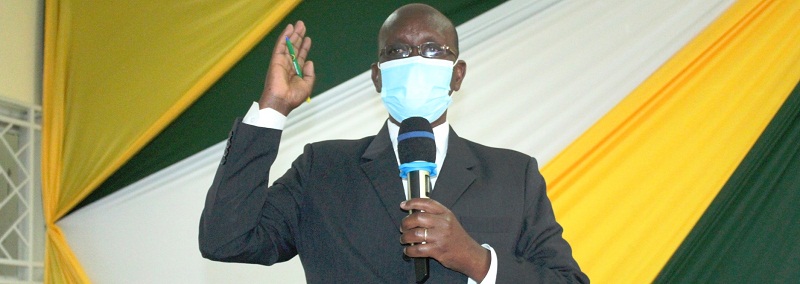By Simon Njane
Savings and Credit Cooperative Societies (Saccos) leaders are expressing mixed reactions to the regulator’s call for mergers as deposits get skewed towards large entities.
While leaders of various Saccos support the proposal by the Sacco Societies Regulatory Authority (Sasra) that Saccos should consider merging to avoid collapsing, they are calling for caution.
Traditionally, Saccos have opted for organic growth, with mergers and acquisitions seen as a preserve for highly regulated financial sector players such as banks.
But players are saying mergers and acquisitions could also work for the Sacco sector to bring about stability and lower costs of operations.
Imarika Sacco chairman Renson Ndoro says the proposal is welcome and could work to the advantage of members of small Saccos struggling to access loans due to limited liquidity.
“The idea is to make Saccos stronger. Merging is for value addition because they will become much stronger and service delivery will be enhanced,” said Ndoro.
Sasra proposal is premised on the fact that the 20 out of the 172-deposit taking (DT)-Saccos control a combined deposit base of Sh224.75 billion, with more than half (59.08 per cent) of the Sh380.44 billion total deposits.
The regulator is concerned that the market share of small Saccos continues to come under pressure from large Saccos, putting them at risk of folding up.
“In the absence of such consolidation and amalgamation initiatives, a time will come in the medium to long term when the market share of these small DT-Saccos will be wiped out, thereby rendering them financially unviable,” warned Sasra.
Trans Nation Sacco CEO Luncham Mugambi says the proposed mergers are good for the sector especially for the small players with thin margins and higher operating costs.
Mugambi, however, cautions that the idea may be scuttled by Sacco leaders such as chief executives, chairpersons and directors for fear of losing their positions upon mergers.
“There are so many small Saccos because of leadership posts. The problem I am seeing in this proposal is therefore the politics,” said Mugambi.
“People in leadership positions such as CEOs and directors may resist for fear of losing their seats.”
Safaricom Sacco CEO Joseph Njoroge told Sacco Review that since the market has several Saccos that are struggling to meet the regulatory capital requirements, mergers can save them from collapse.
“Even in terms of liquidity, they are so stretched to meet members’ demands such as loans. Merging will make it easier to meet regulatory requirements and also serve members because of the economies of scale,” said Njoroge.
Between 2015 and last year, Sasra revoked licenses of 14 DT-Saccos on account of failing to maintain the required levels of core capital.
Sasra data shows that there are now 172 licensed DT-Saccos in contrast with 215 Saccos in 2012. This means 43 Saccos have dropped out during this period.
Boresha Sacco CEO Moses Chebor has also voiced his support for mergers saying it offers room for shared systems that can deepen the uptake of excellent IT solutions.
“It is a wise proposal since we will operate on economies of scale and accelerate uptake of technology in the Sacco movement. it is very expensive for every Sacco to acquire its own systems,” said Chebor.
“The problem comes when everybody wants to be a leader. This calls for educating of members and leaders on the advantages of small societies merging.”
The Safaricom Sacco example may offer lessons on mergers and acquisitions.
Adrian Sacco, a non-deposit-taking sacco which was made up of workers drawn from Adrian Kenya Limited—an IT firm— joined Safaricom Sacco, helping its members benefit from larger loans and stable management.
“Many Saccos that belong to small companies struggle a lot to meet loan demands. When they join large Saccos, members are able to get good services,” explained Njoroge.
But another stumbling block for the mergers could be the fact that the building blocks for many Saccos is the common bond such as farmers, teachers and police officers.
Ndoro urges Saccos to move away from closed bonds especially if they are seeking growth and stability.
For Imarika Sacco, opening up membership has been pivotal to growth. The Sacco was initially called Malindi Teachers Sacco then it was renamed Kilifi Teachers Sacco to accommodate county teachers. It later rebranded to Imarika Sacco to open up membership.
“Saccos which have not moved away from the common bond, mostly employer-based, tend to have a lot of issues. Bond opening is the way to go and conversations around merging should be welcomed,” said Ndoro.
Chebor says that with proper education, the first series of mergers should be for Saccos who are from the same economic activity such as education.
University Saccos are for instance among the cooperatives that have been struggling, a case in point the Moi University Sacco whose license was revoked by Sasra.
“Universities can merge their Saccos and nominate officials from each university to run one large Sacco. This will be as formidable as Saccos such as Mwalimu National Sacco,” said Chebor.
But Mugambi argues that Saccos—even those struggling—may resist the call for mergers.
He says Sasra may step in with some guidance such as advising Saccos with a particular level of capital base to pursue mergers for the good of the sector.
“The only way this can pick would be for Sasra to set a level of capital base below which it can call for them to merge,” said Mugambi.
Several small Saccos have in particular come under Covid-19 pressure as members appetite for loans rose at a faster pace than that of deposits.
Njoroge says since Saccos operate on the multiplier mode of lending up to three times the savings, it is for the good of members if Saccos facing liquidity challenges to merge rather than lose licenses.
“What matters in a Sacco is how it benefits members, not who is in leadership,” said Njoroge.



